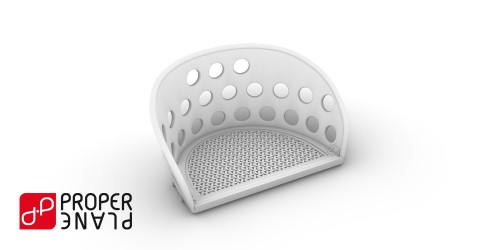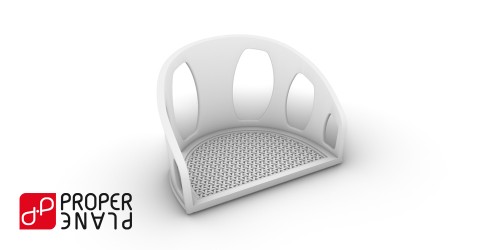The British Wicker Seat was a distinctive piece of equipment widely used in British aircraft during the First World War. Constructed from lightweight woven wicker, it offered a combination of strength, comfort, and weight savings, making it ideal for fragile early airframes where every kilogram mattered. Despite its simple appearance, the wicker seat was an ingenious solution to the challenges of early aviation.
Aircraft equipped with British Wicker Seats
Wicker seats were fitted to a wide range of British aircraft, including:
- Airco DH.2 – pusher scout.
- Airco DH.4 and DH.9 – two-seat day bombers.
- Bristol F.2b Fighter – two-seat fighter and reconnaissance aircraft.
- RAF BE.2 series – reconnaissance aircraft.
- RAF FE.2b – pusher fighter and bomber.
- RAF RE.8 “Harry Tate” – reconnaissance aircraft.
- RAF SE.5 and S.E.5a – single-seat fighters.
- Sopwith Camel – one of the most famous British fighters of WWI.
- Sopwith Pup – light and maneuverable scout.
- Sopwith Triplane – innovative three-wing fighter.
- Sopwith Dolphin – late-war high-performance fighter.
- Sopwith Snipe – post-1918 fighter and Camel successor.
Historical significance
The wicker seat is more than a curiosity of early aviation design — it reflects the ingenuity of engineers who prioritized lightweight materials, durability, and pilot comfort. Many surviving original aircraft and museum restorations still feature their authentic wicker seats, making them an iconic detail of British WWI cockpits.{{freeshipping_code_1}}{{payment}}
British Wicker Seat Perforated Back - Short and Tall - With Small Leather Pad (22-32249) - 1/32
- Brands GasPatch Models
- Product Code: 22-32249
- Availability: In Stock
-
USD 13.90
Related Products
Tags: 1/32, Seat, AMC DH.2, AMC DH.9, Bristol F.2b Fighter, Bristol Scout, DH.9a "Ninak", FE.2b, RE.8 "Harry Tate", SE.5, Sopwith 5F.1 Dolphin, Sopwith Camel, Sopwith Pup, Sopwith Snipe, Sopwith Triplane



